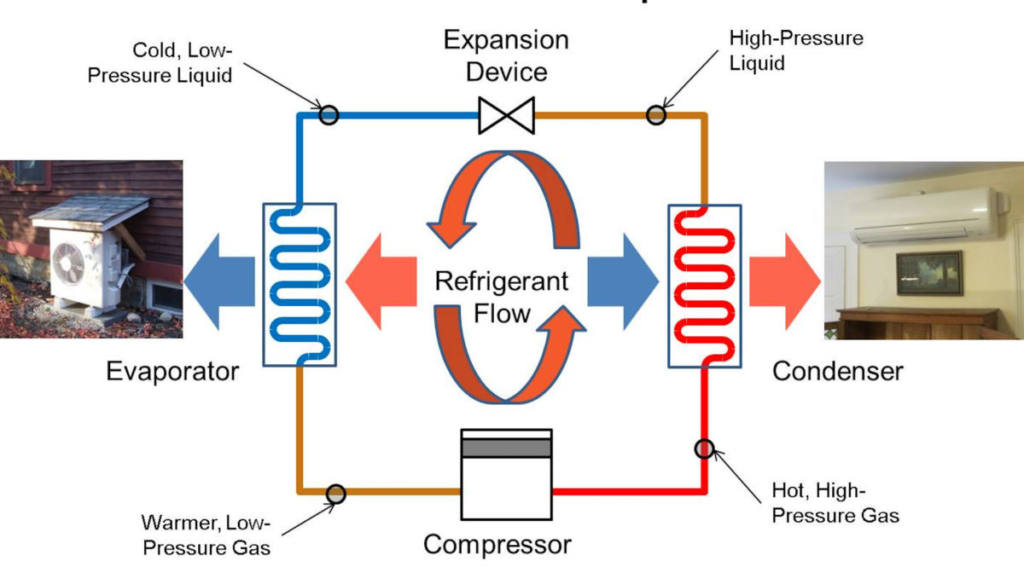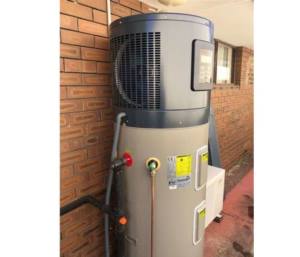
Ground source heat pump systems use heat energy from within the ground to heat or cool an indoor space.
About 6 feet below the ground is a very stable temperature. Ground source heat pumps circulate fluid in pipes at this depth, transferring the heat energy from the ground into this fluid. Heat is then concentrated through electricity and compression and circulated throughout a home or building. For every unit of electricity used, ground source heat pumps can deliver as much as five times the energy from the ground.
During the warmer months, ground source heat pumps can work in reverse, transferring the warm air in a home or building back into the ground, creating a cooler, more comfortable indoor environment in the summer!
There are two types of closed-loop ground source heat pump systems: vertical (below left) and horizontal (below right).

To know what type of ground source heat pump is best for your building or home, it is important to get an energy assessment from an installer!

Air source heat pump systems use heat energy from the air to heat or cool an indoor space.
These heat pump units use electricity to power a compressor and two coils (one indoors, one outdoors). In the cooler months, liquid in the outdoor coil removes heat from the air and evaporates it into gas, prompting the indoor coil to condense the gas back into liquid and release the heat to an indoor space. In the warmer months, the direction of the liquid flow is reversed to facilitate cooling, removing heat from indoors and releasing it outdoors.
Ducted systems use new or existing ventilation networks to circulate air.
Ductless systems simply require a three inch hole in the wall to connect the system and circulate air.
Split systems have indoor and outdoor coils connected by supply and return ducts.
Packaged systems have only outdoor coils and rely on indoor ductwork to circulate heated/cooled air.
Single-zone systems are designed for one room and have one outdoor condenser matched to one indoor head.
Multi-zone systems use multiple indoor coils connected to one outdoor condenser to heat/cool individual rooms.
A heat pump water heater is an electric water heater with an air source heat pump on top. Heat pump water heaters use indoor air to heat the water and typically have a backup system to meet high demands.
Heat pump water heaters can be 2-3 times more efficient than their conventional counterparts and tend to have lower operating costs as well.

Privacy notice: This site uses cookies. To read more about how we use cookies and what other personal information we collect, please visit our privacy policy page.